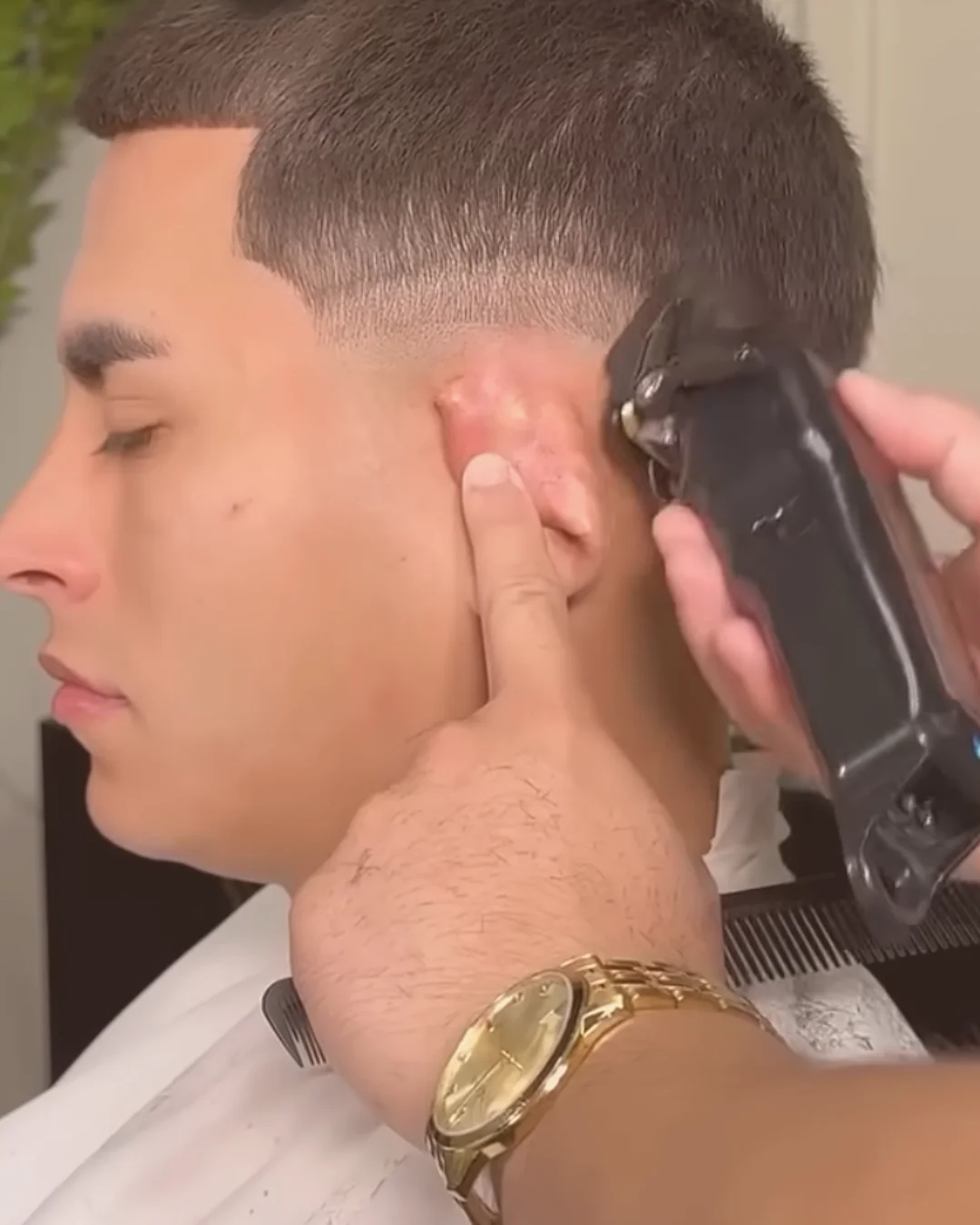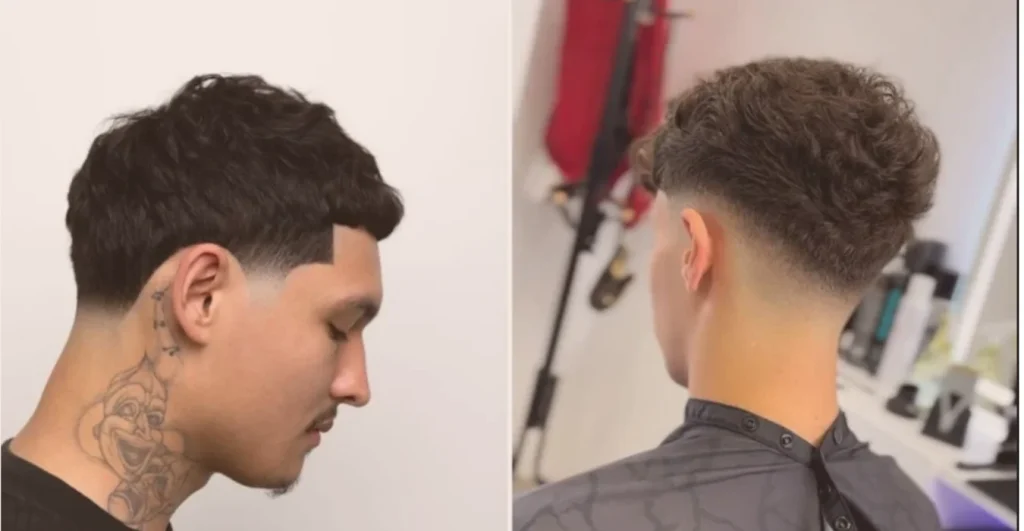Guide your next cut with the utmost confidence and efficiency — learn more about the features that set low fade vs low taper styles apart. It’s the key to creating an ideal image for your needs. Let’s talk more about:
- Distinguishing features between taper and low fade looks, explained in simple terms;
- Visual highlights behind the blend and the length of the chosen cut;
- Personalized decision-making based on your face shape and lifestyle preferences;
- How not to get the wrong result — important questions and matters to consider;
- Photos and style examples for a data-driven approach.
While they may seem similar at first, knowing what is what will save you a lot of trouble.
Contents
What Is a Taper Fade?
Overall, this hybrid haircut combines the elements of a taper and a fade, hence the name. The main profile features of this style boil down to the following:
- No visible lines from the top of the cut all the way to the sideburns;
- A natural contour with well-defined edges (a #2 guard at most);
- Differently styled tops — low, mid, and high tapers;
- A blended finish;
- Even hair growth.
What is a taper haircut’s key aesthetic? It’s all about a balanced look, without the harshly outlined neckline. At the same time, you should be extremely specific about your wants when discussing the styling with your barber. The difference between taper and fade here can be minimal, which can make these styles so hard to distinguish.
Just take a closer look at this example of a mild taper fade. Newbies can confuse it with a textured quiff taper and a modern Caesar fade.

What Is a Low Fade?
While the genuine distinction between taper vs fade haircuts may not be obvious at first, here are the features to clearly name a low fade when you see one:
- A fade starting just above the ear (about one inch above) and curving around the neckline;
- A soft contrast between the hairline and the skin, with the use of a #0.5 or a #1.5 guard for a blended range and a no-guard closed technique for finishing touches;
- Ideal for beginners, as it is a forgiving style — no uneven fading between the trims;
- Clean edges.
This style is also extremely versatile. Its subtle details stand out, making it appropriate for multiple casual, conservative, and professional settings. Low fades can also be confusing — they may seem to mimic such styles as a drop or burst fade.

Side-by-Side Comparison: Taper Fade vs Low Fade
When it comes to low fade vs taper fade stylings, the latter can keep a lot more of that natural hair darkness, making the taper pop way more. On the other hand, a normal low fade would be on the whole back and sides. Tapers are excellent if you want to have a bit more length through the top, since it helps build up the right structure, giving the top decent support. If you’ve got lower density on the sides, it’s better to go with a low fade.
| Feature | Taper Fade | Low Fade |
| Where It Fades | Just sideburns and the neckline | Around the ears, up to the temples |
| Look | Subtle & classic | Bold & modern |
| Maintenance | Low | Medium |
| Ideal for | Workplaces, appropriate for any age | Fashion-forward, for a more youthful appearance |
| Works with | All hair types | Short & medium hair for top-notch cuts |
| Styling Flexibility | High | Moderate |
| Common with | Crew cuts, Ivy League | Quiffs, comb-overs, and curls |
How to Choose Between Taper and Low Fade
If you can’t decide which style in the taper fade vs fade comparison is more to your liking, I’ve got your back. Let me share some life-hack-style notes for your tailored strategy.
Go taper fade when:
- You need more versatility. It can elevate side parts, pompadours, and comb-overs in your haircut.
- You opt for professional looks that work for semi-formal, business-casual, and formal attire.
- You are interested in simple upkeep — monthly visits to your barber can work.
- You prefer stylings with added structure and volume.
- It’s your first fade. It gently introduces you to this haircut realm — a more forgiving style for adjustments in comparison with a low fade.
Go low fade when:
- You want a beard fade with standing-out crisp lines.
- You are looking for a smart way to make your facial silhouette seem slimmer visually.
- You are eager for a more masculine image that highlights your cheekbones and jawline.
- You have curly or wavy hair, opting for a natural texture on the top.
- You have time and resources for more regular maintenance.
What to Tell Your Barber to Get the Right Fade
Ensure you are on the same side with your barber — don’t hesitate to ask questions like “What’s a taper fade?” to minimize the risk of language barrier issues. Reference photos will be extremely helpful as well, but they won’t necessarily guide the progress of the trimming session:
- Whether you choose taper vs low fade, be precise with your measurements. Show exactly where the fade should take place and how it has to be blended.
- Walk your barber through your vision for an ideal haircut, especially covering such topics as the length of the top and the sides.
Styling Tips for Taper and Low Fades
Your styling tactics can make a difference between the taper fade haircut vs low fade haircut. Never go for viral products only because of their hype in the market — ensure their ingredients and functions suit your preferences in terms of hold, shine, and finish. Finger-combing and diffuser-based drying techniques will simplify your haircut upkeep experience.
| Style | Product | Use Tip | Expert Recommendation |
| Taper | Matte Cream | Adds texture without unnecessary stiffness | Layrite Natural Matte Cream |
| Low Fade | Pomade | Helps define the blend and the lines | Brickell Men’s Styling Clay Pomade for Men |
| Both | Sea Salt Spray | Increases natural volume without grizziness and heaviness | Viking Revolution Sea Salt Spyra for Men |
Visual Guide: Taper Fade vs Low Fade Looks
The main difference between taper fade vs low fade vs mid fade is where the fade starts and how it blends. Compare more pictures of the corresponding style to see how uniquely it elevates a certain hair type — a low fade on straight and curly hair won’t be the same.
At the end of the day, these cuts are all about universal efficiency. They will help you create a stylish image without going beyond non-trivial experiments. If you aren’t sure which cut suits your identity and appearance more, this data-driven comparison broadens your outlook on this topic.

Is a taper fade more subtle than a low fade?
For a more natural look with a subtler distinction between the top and fades, consider a taper version.
Which fade lasts longer?
Low fades tend to regrow faster, while the alternative option remains cleaner for longer.
Can I get a low fade with long hair?
Absolutely! In my experience, it works best when you experiment with short-to-medium hairstyles in this category.
Is a taper fade okay for work or formal events?
With a bit of product-forward styling, you can effortlessly link your haircut’s appeal to the target occasion’s dress code.

